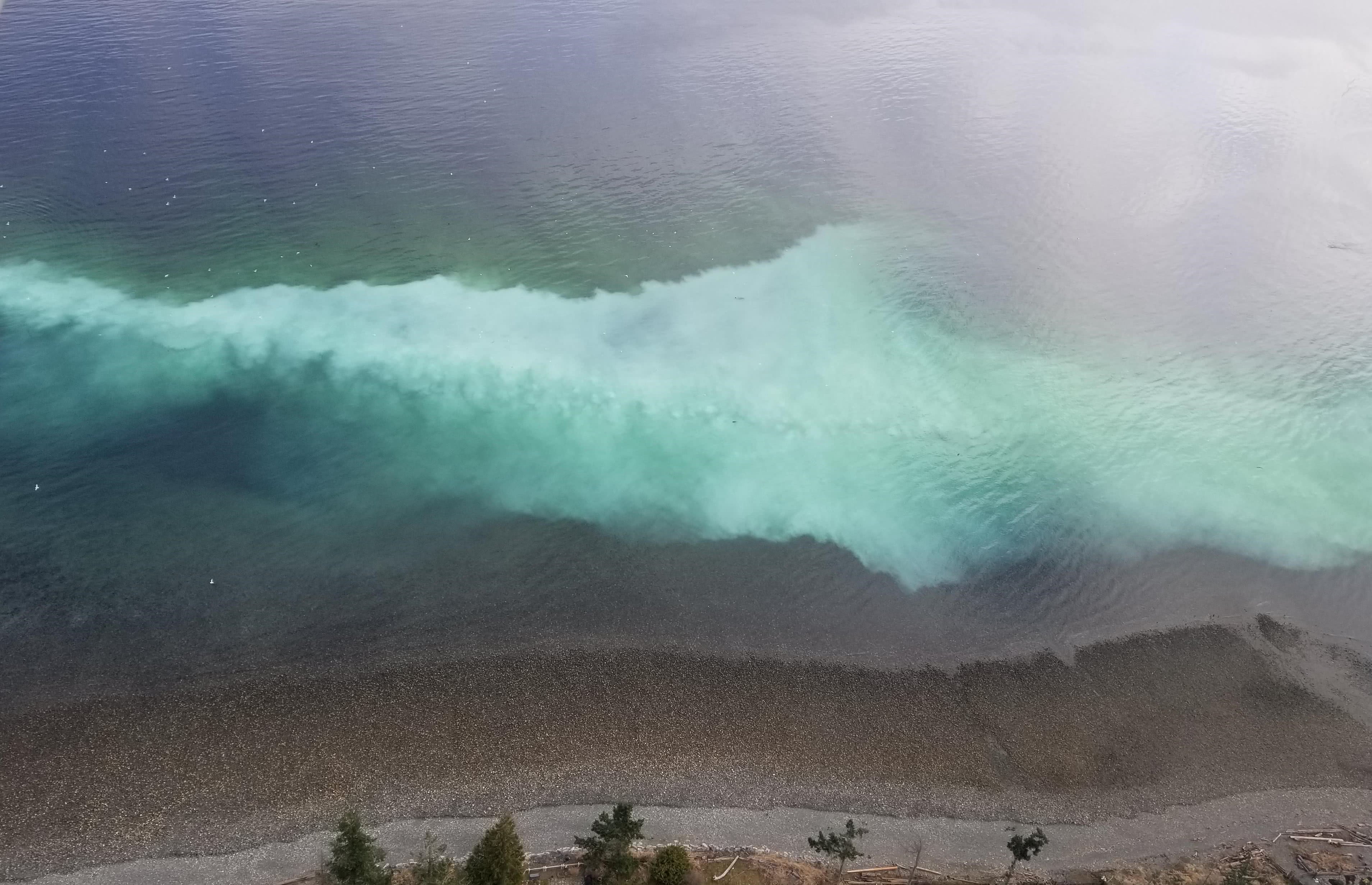Fisheries and Oceans Canada (DFO) manages the Pacific herring fishery, but did you know that herring management staff are also working with the Mowachaht/Muchalaht First Nation and the Canadian Coast Guard at the Bligh Island shipwreck response? As is common at this time of year, Pacific herring are expected to arrive in Nootka Sound in the near future. As their numbers increase in the area, and as they begin to spawn, it may be necessary to adjust response efforts.
DFO staff are tracking herring spawn through test fishing vessels and aerial surveys as part of coastwide herring surveillance programs. These flights have been increased this year along the West Coast of Vancouver Island so as to improve the information available to response operations. Additionally, DFO staff are working with Mowachaht/Muchalaht representatives in the Bligh Island virtual Incident Command Post to keep a record of local herring sightings. On-water responders will also conduct periodic vessel and drone surveys to give response planners near-real time herring spawning locations. DFO staff are also working with Coast Guard and Mowachaht/Muchalaht to ensure harvesters are able to receive the most up-to-date information from the response, in case of any major changes to the sunken shipwreck situation.
The arrival of herring in the area will likely lead to an increase in the number of birds, marine mammals and other wildlife that normally inhabit the waters around Bligh Island. This means that the incident responders may need to increase the frequency of bird deterrent device deployment, particularly around the boom that encompasses the shipwreck site. And because herring and herring spawn are an important traditional food source for local Indigenous communities, responders will need to be nimble and ready to re-focus prevention effort on areas with herring spawn in case of a sudden large oil release.

